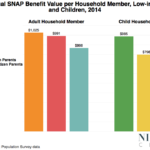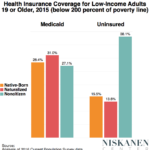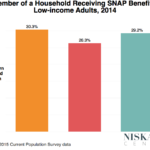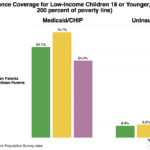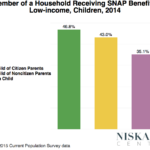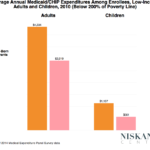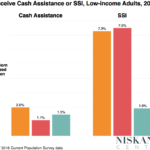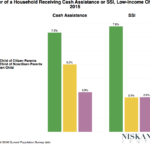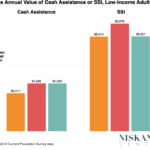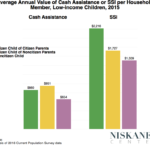Executive Summary
Poor immigrants use public benefits at significantly lower rates than poor citizens. This is a finding that has been independently and repeatedly demonstrated in the U.S. context by researchers across the ideological spectrum, from the Cato Institute to the Center for American Progress. In this short paper, we confirm it again using the latest available data. Our findings include:
- Low-income noncitizens use SNAP, SSI, and TANF at substantially lower rates, and in substantially smaller quantities, than citizens.
- This is true of households that are in theory fully eligible for programs due to the presence of citizen children.
- Medicaid and CHIP participation is broadly similar between citizens and noncitizens; however, a much larger number of noncitizens have no health insurance at all.
The key reasons low-income noncitizens are less likely to access public benefits include tight restrictions on eligibility and confusion about what benefits are available. Nonetheless, the notion that noncitizens make disproportionate use of public benefits remains widespread. At the very least, as a popular myth it ought to be avoided as the premise for public policy.
Read the report in its entirety here.
Charts and Graphs
